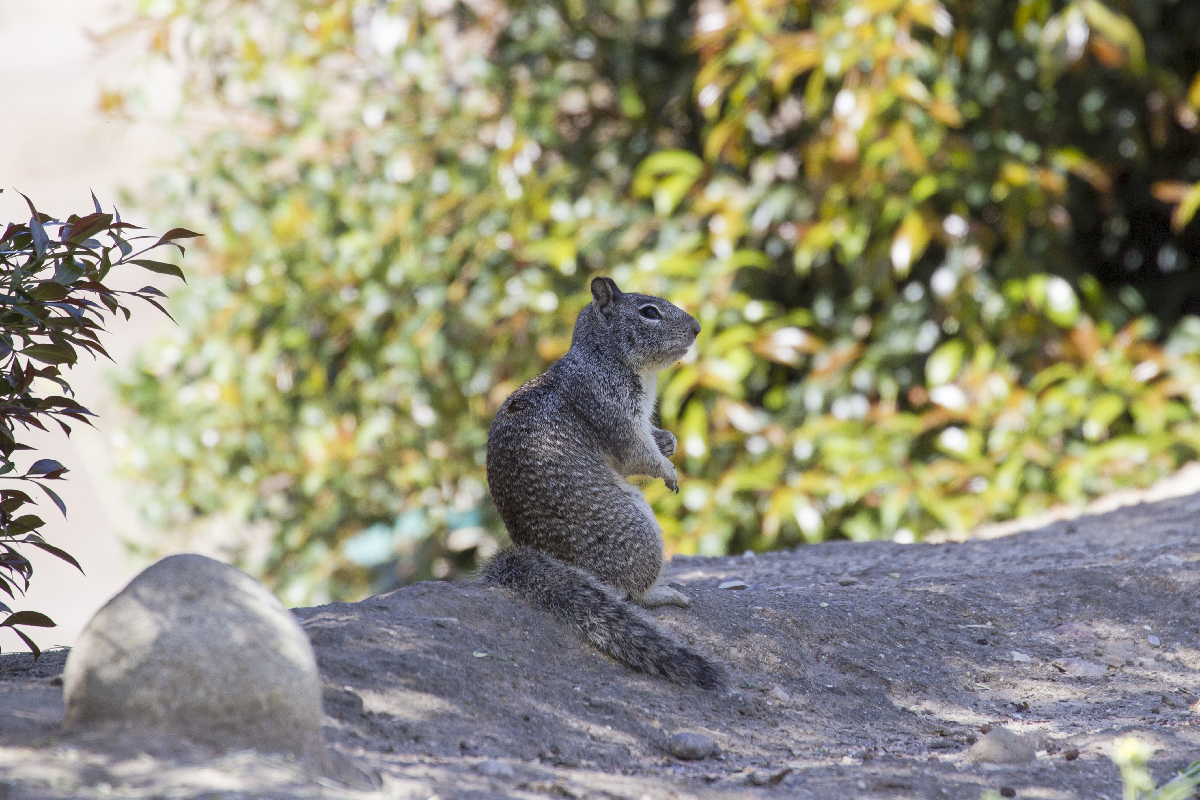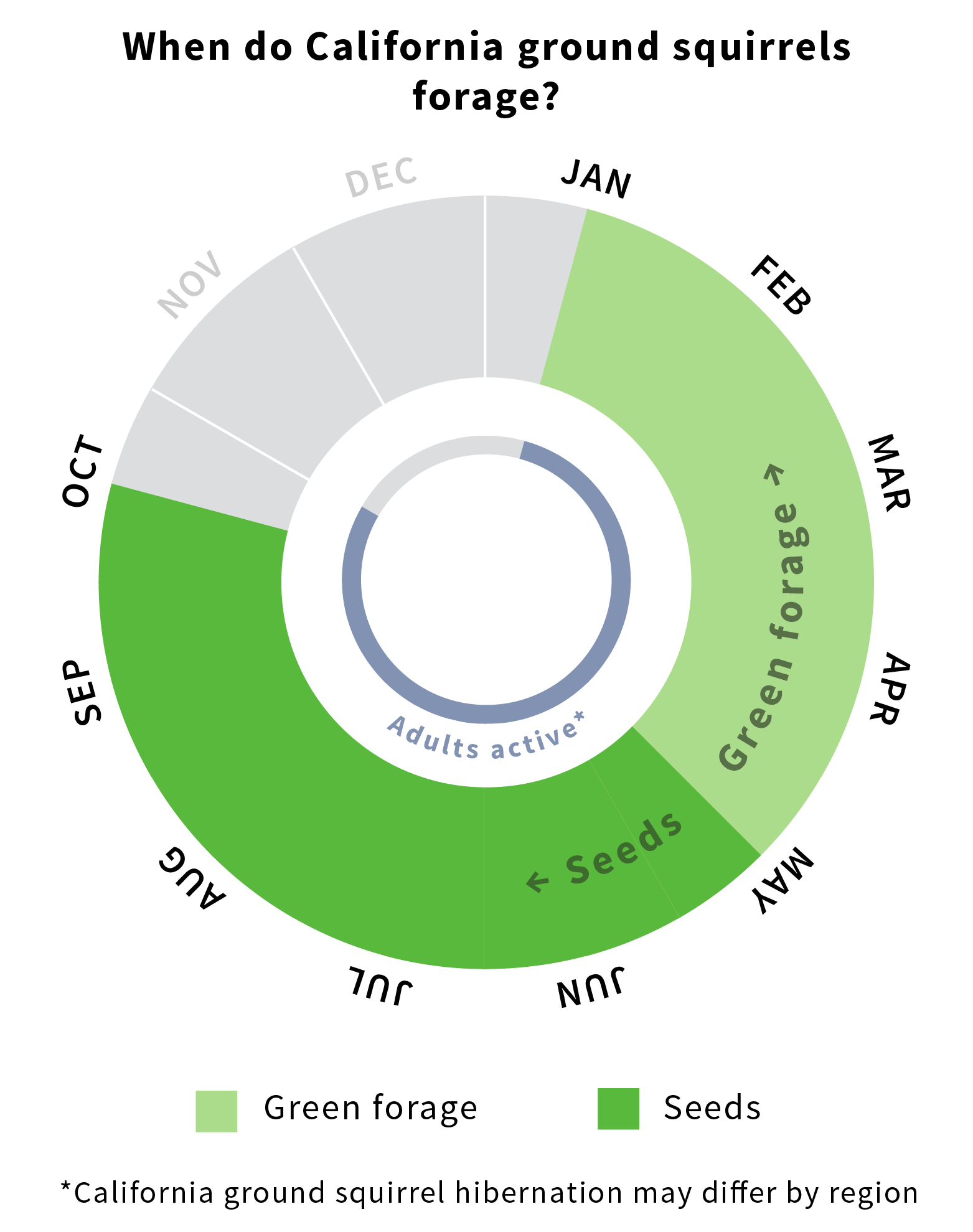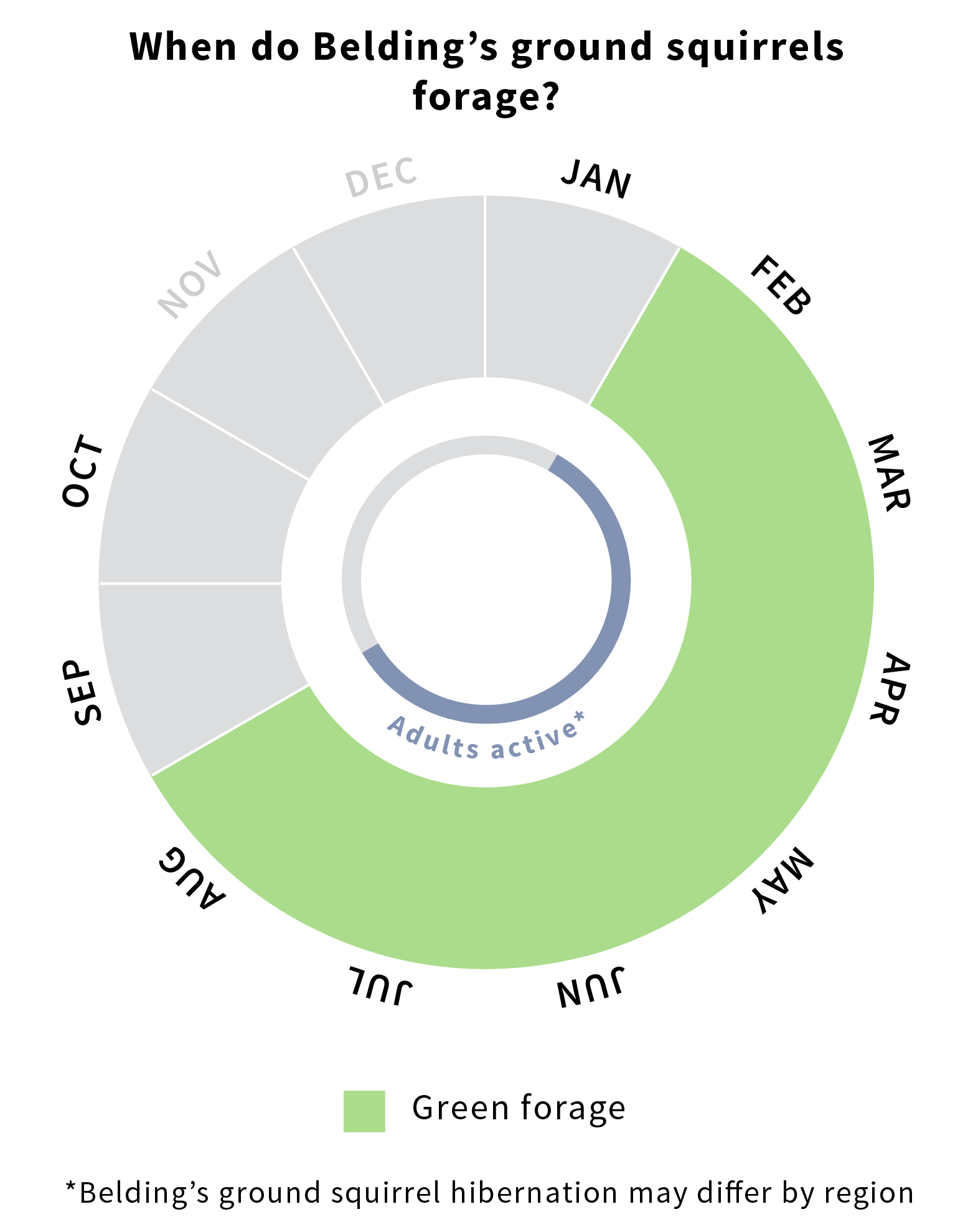Behavior and Diet
California Ground Squirrel
|
California ground squirrels are diurnal, which means that they are active during the day. During spring and summer, California ground squirrels avoid the intense heat in the middle of the day. Hence, they are most active during the middle of the morning and in the late afternoon. In winter, some California ground squirrels hibernate. Those that do not are only active on the warmest days before noon.
California ground squirrels often have a small home range; the area where an individual squirrel is active, which contains all of the resources it needs to survive and reproduce. Females have home ranges of approximately 0.5 acres, while male home ranges are about half the size (0.25 acres). They generally make short excursions from their burrows. Diet California ground squirrels are opportunistic but prefer a wide range of forbs, grasses, and leaves of lower growing shrubs during the months when green forage is readily available (generally from November through March/April). Otherwise, California ground squirrels rely on seeds as their primary food source. They carry food away in their cheek pouches so that they may hull the seeds in safe, shady spots or cache them for consumption at a later time. They also eat some species of invertebrates. California ground squirrels exhibit seasonal food preferences. After hibernation and throughout gestation and lactation, they feed almost exclusively on green grasses and other herbaceous plants. As these become less plentiful, they switch to seeds and fruits. This dramatic switch occurs over about a two-week period. It is important to observe these feeding patterns and choices, because ground squirrel food preference can influence the effectiveness of certain management options. For example, when California ground squirrels are feeding on seeds and grains, toxic baits that use grains as carriers are more readily accepted and may be ineffective at times of year when the squirrels prefer fresh foliage. |
Belding's Ground Squirrel
|
From February to August, when Belding’s ground squirrels are not in hibernation, they usually emerge from their burrows at dawn and forage for large parts of the day. Belding’s ground squirrels do not cache food and must consume large amounts of food to prepare for the hibernation period.
Diet Belding’s ground squirrel feeds extensively on the leaves and stems of wild and cultivated grasses and legumes. They also consume flowers, stems, leaves, and roots of herbaceous plants, depending on what is available in their habitat. In contrast to the California ground squirrel, Belding’s ground squirrel does not switch to seeds and grains as a food source during summer, but instead enters into hibernation. The lack of seeds in their diet creates significant management issues given that commercial squirrel baits use grains as a carrier. Thus, uptake of bait by Belding’s ground squirrel tends to be low. |




